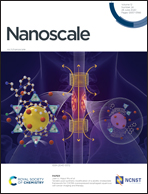Surface-coordinated metal–organic framework thin films (SURMOFs) for electrocatalytic applications
Abstract
The design and development of highly efficient electrocatalysts are very important in energy storage and conversion. As a kind of inorganic organic hybrid material, metal–organic frameworks (MOFs) have been used as electrocatalysts in electrocatalytic reactions due to their structural diversities and fascinating functionalities. Particularly, MOF thin films are coordinated on substrate surfaces by a liquid phase epitaxial (LPE) layer by layer (LBL) growth method (called surface-coordinated MOF thin films, SURMOFs), and recently have been studied in various applications due to their precisely controlled thickness, preferred growth orientation and homogeneous surface. In this review, we will summarize the preparation and electrocatalysis of SURMOFs and their derived thin films (SURMOF-D). The SURMOF based thin films possess diverse topological structures and flexible properties, providing abundant catalytically active sites and fast charge transfer for efficient electrocatalytic performance in the oxygen evolution reaction (OER), oxygen reduction reaction (ORR), hydrogen evolution reaction (HER), carbon dioxide reduction reaction (CRR), supercapacitors, tandem electrocatalysis and so on. The research challenges and problems of SURMOFs for electrocatalytic applications are also discussed at the end of the review.

- This article is part of the themed collections: Editor’s Choice: Functional MOFs and COFs, Recent Review Articles and Celebrating 60 years of the Fujian Institute of Research on the Structure of Matter


 Please wait while we load your content...
Please wait while we load your content...